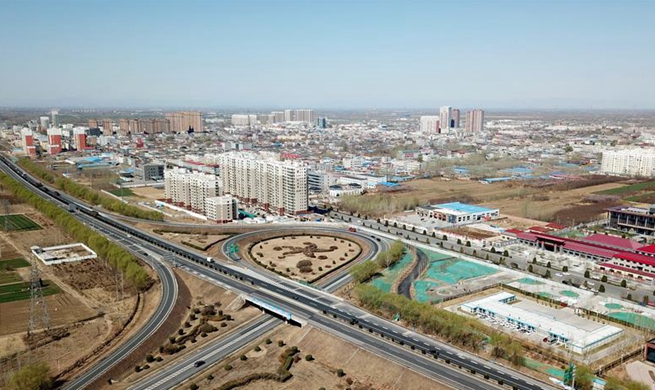NAIROBI, April 3 (Xinhua) -- Kenya's financial services and products inclusion rate rose to 82.9 percent of the adult population in 2019, up from 26.7 percent in 2006, says a report released on Wednesday.
The 2019 FinAccess Household Survey released by the Kenya National Bureau of Statistics and the Central Bank of Kenya (CBK) says several factors contributed to the increase, including the rapid uptake of mobile money, adoption of transformative financial technologies and innovations as well as government initiatives and policies.
"The 2019 survey findings clearly show that Kenya's financial inclusion landscape has undergone a transformation since 2006," says the joint report.
The survey is the fifth in a series of reports that measure and track developments and dynamics in the financial inclusion landscape in Kenya from the demand-side.
The report's key objectives is to provide data to stakeholders including policy makers, private sector and researchers.
The survey focused on usage, quality, impact and welfare dimensions of measuring financial inclusion.
The study indicates that those completely excluded from formal financial services reduced from 41.3 percent in 2006 to 11 percent in 2019.
"This significant reduction in the proportion of the adult population totally excluded from financial services vindicates the policies, strategies and reforms undertaken by the government as well as the widespread adoption of digital technology and innovations by financial sector players," the study says.
The review also shows that disparities in financial access between rich and poor, men and women and rural and urban areas have also declined remarkably.
The report notes that informal finance remains strong despite the spread of formal finance with over 60 percent of Kenyans still using informal solutions such as borrowing from shopkeepers, friends and family.
The survey shows that credit is used overwhelmingly for consumption, while savings is used for a range of purposes such as meeting expenses arising from emergencies, household consumer needs and for education.
The data shows that the top reasons for lack of savings are lack of regular income.
Patrick Njoroge, Central Bank of Kenya (CBK) governor said that despite the progress made so far in increasing the rate financial inclusion, affordability and consumer protection issues such as unexpected charges remain barriers to formal service access.
Njoroge said that even more notably from the findings is the minimal impact of formal financial access to overall social economic development.
"Many Kenyans have formal accounts in various forms but these accounts are rarely used because they are not solving real day-to-day problems for many households and micro scale businesses and farmers," he added.
He revealed that Kenya now ranks third in financial inclusion in Africa after Seychelles and South Africa.
Njoroge noted that there has been a significant decline in the micro-finance institutions usage due to a rapid uptake of digital loan apps as well as the increasing role of mobile money.
Njoroge said that between 2016 and 2019, the gap between savings and credit has also narrowed.












